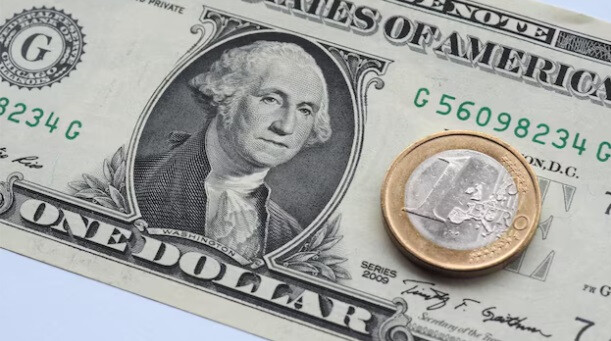
Seoul, South Korea – The US dollar continues to strengthen against the euro, with the possibility of the two currencies reaching parity (1 euro = 1 dollar) within the next two years. This would mark the second time in two years that the euro has fallen to such a low level.
On November 22nd, the euro-dollar exchange rate dipped to 1.0418 dollars per euro, its lowest level since November 2022. Since the US presidential election, the euro has been steadily declining amid expectations of a stronger US economy and potential trade tensions under the new administration.
Several factors are contributing to the euro's weakness and the dollar's strength:
Strong US Economy: The US economy is showing signs of resilience, with robust employment data and increasing producer prices. This has led to expectations that the Federal Reserve may maintain or even increase interest rates.
Weak European Economy: In contrast, the European economy is facing challenges, particularly in Germany, where the manufacturing sector has been struggling. The European Central Bank is expected to cut interest rates to stimulate the economy.
Trade Tensions: The possibility of increased trade tensions between the US and Europe under the new administration is also weighing on the euro.
Market Speculation: Hedge funds have been betting on the euro's decline, further accelerating the downward trend.
The last time the euro and dollar reached parity was in 2022, amid the COVID-19 pandemic and global economic uncertainty.
The divergence in monetary policies between the US and the Eurozone is a key factor driving the exchange rate movements. While the US Federal Reserve is expected to maintain a hawkish stance, the European Central Bank is likely to adopt a more accommodative policy.
The South Korean won has also been weakening against the dollar, with the exchange rate nearing 1,400 won per dollar. The recent release of weak economic data from Europe has further fueled the dollar's strength and the won's weakness.
Market participants are closely watching the upcoming Federal Open Market Committee (FOMC) meeting on November 28th and the Bank of Korea's monetary policy meeting on the same day. Analysts believe that if the FOMC minutes indicate a continued hawkish stance and the Bank of Korea decides to keep interest rates unchanged, the downward pressure on the won could intensify.
[Copyright (c) Global Economic Times. All Rights Reserved.]






























